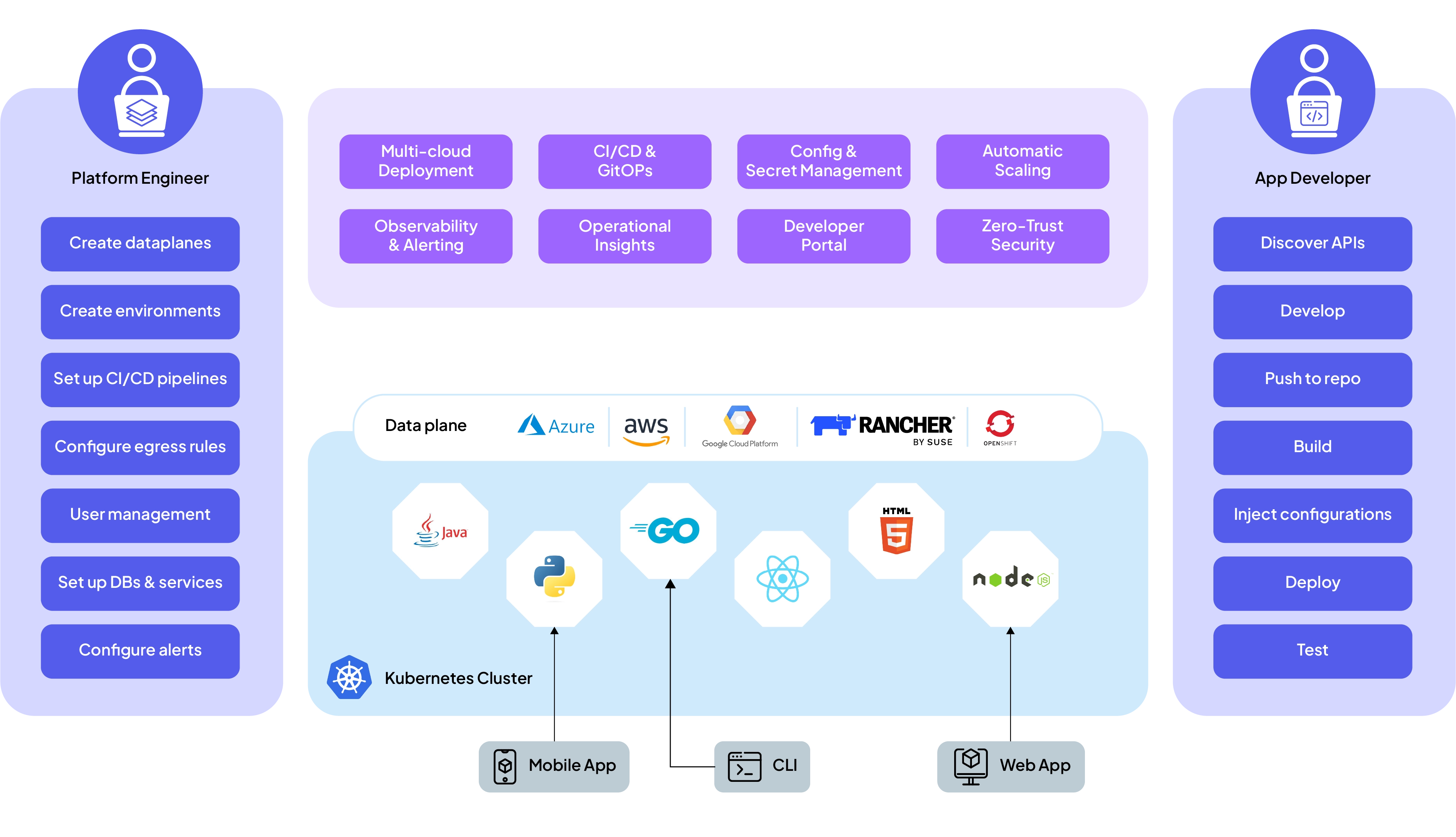Think of it as the App Store for your company’s engineering ecosystem—where developers go to discover, provision, and manage everything needed to ship software.
The Problem It Solves
In large organizations, developers often spend 20–30% of their time on non-coding tasks:
- Searching for the right database or API
- Filing tickets for access or environments
- Deciphering outdated wikis
- Debugging misconfigured deployments
This context-switching tax slows velocity and frustrates talent. An IDP eliminates these bottlenecks by making infrastructure as consumable as code.
Anatomy of a Modern IDP
Software Catalog
A dynamic registry of all internal services, libraries, and infrastructure components. Each entry includes:
- Owner & on-call rotation
- API contracts (OpenAPI, AsyncAPI)
- Dependency graph
- Health & SLO status
Self-Service Marketplace
Click-to-run actions backed by automation:
- “Spin up a staging environment”
- “Add a feature flag”
- “Request a TLS certificate”
- “Scale Kafka partition”
All powered by IaC, CI/CD pipelines, and policy engines (e.g., OPA).
Golden Path Templates
Pre-vetted project scaffolds that embed:
- Security defaults (SCA, SAST)
- Observability (tracing, logs, metrics)
- CI/CD configuration
- Cost guardrails
New services launch compliant by default.
Platform Insights
Real-time dashboards tracking:
- Deployment frequency & lead time (DORA)
- Cloud cost per team/service
- Security compliance score
- Tech debt signals (outdated dependencies)
Access & Governance Layer
Integrated with SSO and RBAC. Every action is audited. Policies enforce:
- Allowed cloud regions
- Approved base images
- Mandatory reviews for prod access
Real-World Impact
| Metric | Before IDP | After IDP |
|---|---|---|
| New environment provisioning | 2–5 days | < 10 minutes |
| Onboarding time | 2–4 weeks | 1–3 days |
| Tickets to Platform team | 200+/month | < 20/month |
| Services using golden paths | ~15% | 90%+ |
Leading IDP Solutions
| Tool | Type | Standout Feature |
|---|---|---|
| Backstage | Open Source | Plugin marketplace; Spotify origin |
| Port | Commercial | Flexible data modeling |
| Cortex | Commercial | AI-powered service recommendations |
| OpsLevel | Commercial | Maturity rubrics & automated checks |
| GetPort | Commercial | No-code workflow builder |
Building vs. Buying
- Build: Full control, but 12–18 months to maturity.
- Buy: Faster time-to-value, but less flexibility.
- Hybrid: Start with Backstage + commercial add-ons.
Implementation Roadmap
- Week 1–2: Inventory all services and tools.
- Month 1: Launch a basic catalog (Backstage or Port).
- Month 2: Add one self-service action (e.g., “create dev namespace”).
- Month 3: Introduce a golden path for your most common service type.
- Quarter 2: Roll out scorecards and cost visibility.
Treat your IDP like a product—with user research, roadmaps, and NPS.
Avoid These Traps
- Over-customization: Don’t rebuild Jira or Confluence inside the IDP.
- Stale data: Automate catalog syncing from Git, CI, and cloud APIs.
- Platform team bottleneck: Empower developers; don’t gatekeep.
The Future: Platform as a Product
Next-gen IDPs will feature:
- AI copilots that suggest templates based on GitHub activity
- Predictive provisioning (auto-scale before traffic spikes)
- Cross-org federation (share services across business units)
Bottom Line
what is an internal developer portal engineering from a support function into a strategic product. It lets platform teams scale their impact while giving developers autonomy—unlocking faster cycles, happier teams, and more reliable software.







